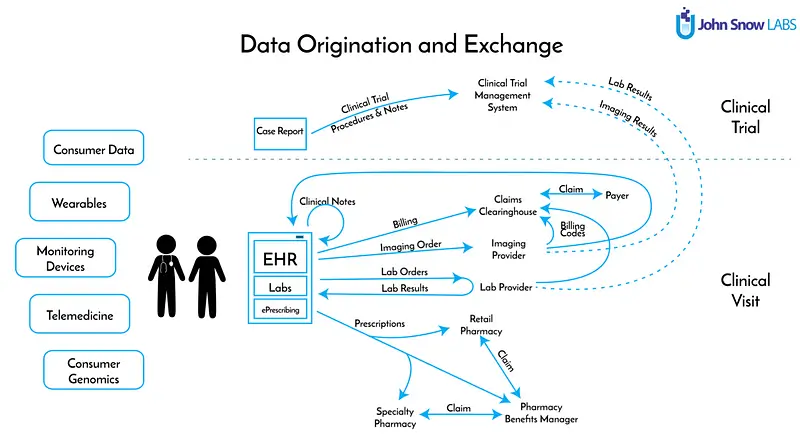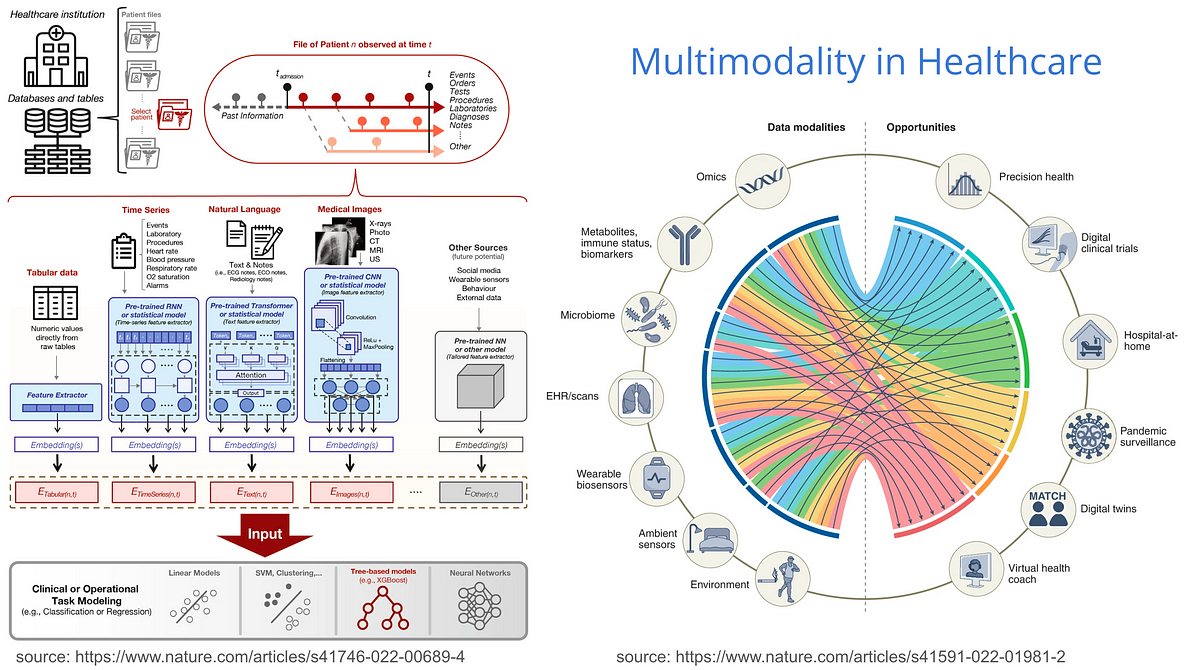
Navigating the Complex Data Landscape of Healthcare
In the world of healthcare, the sheer volume and variety of data generated can be overwhelming. From electronic health records (EHRs) to wearable device outputs and telemedicine interactions, healthcare data is vast and multifaceted. However, the systems currently in place are primarily designed to streamline healthcare delivery rather than optimize data usability for analytical purposes. This presents a significant challenge as well as a profound opportunity for data scientists and healthcare professionals alike.
Exploring further into this domain, the data in healthcare emerges from an array of sources, creating a complex ecosystem that often eludes the complete grasp of key decision-makers. As the data is gathered from diverse resources, including various devices, locations, and physicians, the inconsistency in data format across different centers becomes a prominent issue. For instance, the language and data format employed in one center might not align with those used in another, complicating data aggregation and analysis.
The critical endeavor in healthcare data management is to organize clinical facts on a timeline. This chronological arrangement is vital because it allows physicians to review a patient’s history during visits, aiding in informed decision-making. Notably, this process is arduous as much of the healthcare data is unstructured. Though some structured data exists, the inconsistency in formats from one entity to another poses significant challenges.
To address these issues, various software solutions, automation tools, and large language models (LLMs) have been developed to facilitate the integration of diverse data types. These tools aim to transform unstructured data into a common format, such as FHIR (Fast Healthcare Interoperability Resources), OMOP (Observational Medical Outcomes Partnership), or knowledge graphs. This standardization is crucial for enabling effective data analysis and research.
Moreover, by organizing data into a common format and aligning it on a timeline, healthcare professionals can more readily utilize analytic tools to answer complex patient-level questions. For example, identifying patients diagnosed with specific conditions who have undergone particular tests or treatments becomes feasible. These capabilities are enhanced by the use of structured query languages and the latest advancements in LLMs, which can even interpret queries expressed in natural language.
Thus, the journey through healthcare’s data landscape involves not just managing but also strategically enhancing the usability of data for clinical and research purposes. The goal is to transform data into a powerful tool for enhancing patient care and advancing medical knowledge, despite the inherent challenges of data variety and system design focused on immediate care rather than long-term data utility.
The Multimodality of Healthcare Data
Healthcare data isn’t just about text-based information; it encompasses a wide array of formats including audio recordings, imaging like X-rays or MRIs, genomics data, and more. This multimodality means that a physician making a diagnosis needs to consider a holistic view of available data, not just isolated pieces of information. For instance, a physician might review a patient’s history, recent test results, and imaging to make informed decisions.

The Power of Decision Support Systems
In such a complex environment, decision support systems (DSS) that can integrate and interpret this diverse data become invaluable. These systems allow healthcare providers to make better-informed decisions by providing comprehensive, context-aware insights into a patient’s condition. The goal is to build systems that present clinical facts in a coherent timeline, enabling physicians to see not just the current status but also historical data that could influence diagnostic and treatment decisions.
The Role of Information Extraction Systems
To effectively use the rich data available, there is a pressing need for robust information extraction systems. These systems are essential for converting unstructured data into a structured format that can be easily analyzed and interpreted. Unlike generative models that may create content based on patterns, information extraction systems focus on pulling accurate and factual content from various data sources. This accuracy is crucial in medical settings where decisions have significant implications on patient outcomes.
Whether to rely on LLMs or just use classic ML-based systems enhanced by rules in information extraction tasks is out of the scope of this blogpost and it is explained in detail in one of my earlier blogposts. In short, even if LLMs excel in reasoning tasks, they fail in information retrieval tasks, and most of the time it could even be an overkill to employ them on such tasks.
Enhancing Clinical Decision-Making
Integrating these technologies into healthcare practices can drastically improve the efficiency and accuracy of diagnoses and patient management. By implementing systems that aggregate and organize data into a logical timeline, clinicians can identify patterns more quickly and make diagnoses based on a comprehensive view of patient data. This not only speeds up the diagnostic process but also ensures that it is based on a complete picture, potentially reducing errors associated with overlooking critical information.
The Future of Healthcare Data Utilization
As technology advances, the potential to harness and utilize healthcare data more effectively grows. The development of advanced information extraction systems and decision support tools represents a significant step forward in transforming healthcare into a more data-driven industry. These tools not only support healthcare providers but also enhance patient care by ensuring that decisions are informed by a complete and accurate data set.
In conclusion, while the challenge of managing and interpreting vast amounts of healthcare data is daunting, the evolution of specialized NLP tools and systems offers promising solutions. By focusing on enhancing the accessibility and usability of healthcare data, we can unlock new possibilities for medical research and patient care, ultimately leading to better health outcomes and more efficient healthcare services.





























